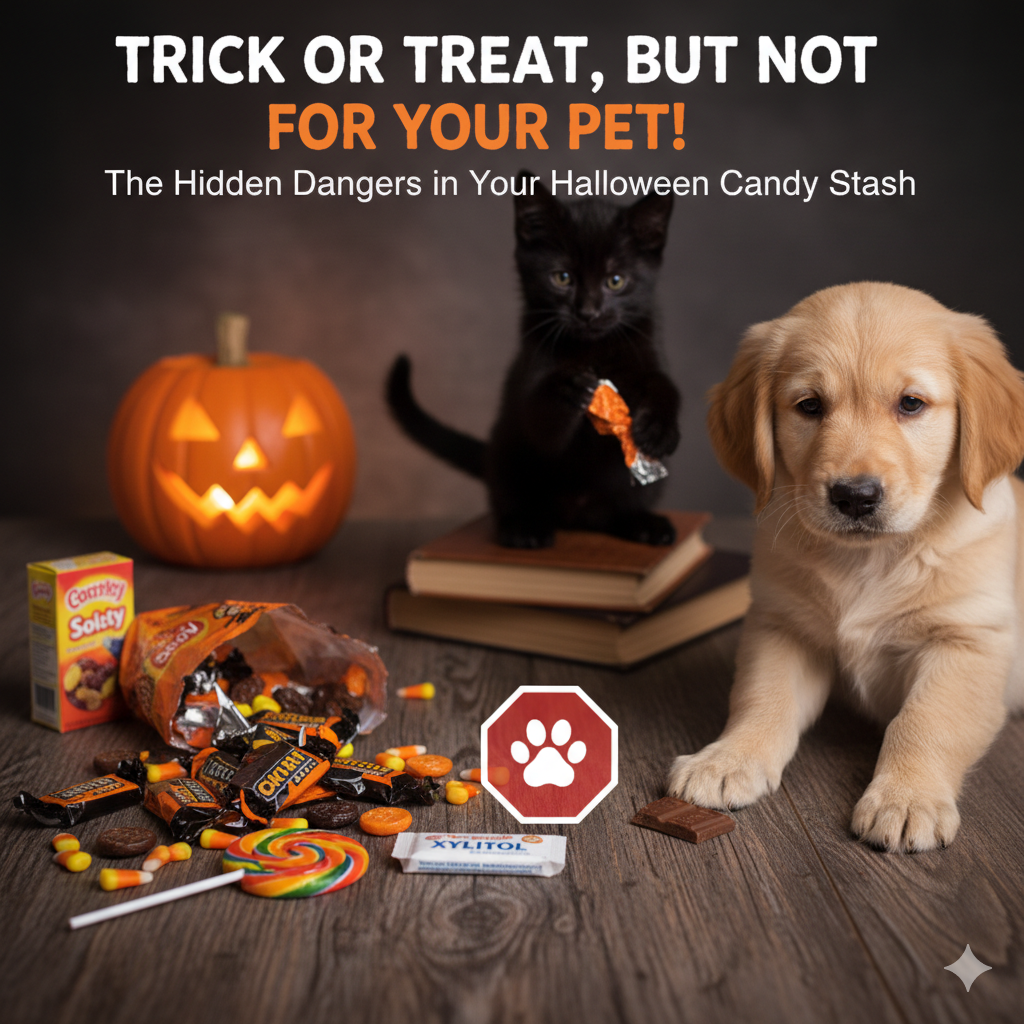
Halloween is a night of costumes, spooky fun, and, most of all, a massive haul of delicious candy. As you settle in to enjoy your favorite treats, your furry friend might be giving you their best puppy-dog eyes for a sample.
STOP! Before you share even a small piece, you need to know that much of your Halloween candy is highly toxic to your dog or cat. While you enjoy the sweet rush, those very treats can send your pet straight to the emergency vet.
Here is a breakdown of the most dangerous Halloween candy ingredients and items you need to keep far away from your pets.

These ingredients are the most serious threat and require immediate veterinary attention if ingested.
1. Chocolate
Chocolate is the most common Halloween toxicity. It contains compounds called methylxanthines (specifically theobromine and caffeine) that pets cannot metabolize as quickly as humans. This means the toxins stay in their system longer, causing a more severe reaction.
2. Xylitol (Artificial Sweetener)
Often found in sugar-free gum, sugar-free candy, mints, and some baked goods, Xylitol (also called birch sugar) is a grave danger to dogs.
3. Raisins and Grapes
Some people hand out mini-boxes of raisins as a healthy alternative, but these are extremely dangerous.
Even if a candy doesn’t contain a deadly toxin, it can still pose a major threat to your pet’s health.
| Hazard | Candies Involved | Risk to Pet |
| High Sugar & Fat | Candy Corn, Caramels, Gummy Treats, anything super-sugary/fatty. | Ingestion of large amounts of sugar and fat can lead to severe gastrointestinal upset (vomiting and diarrhea) or a potentially fatal condition called pancreatitis (inflammation of the pancreas). |
| Candy Wrappers | Any wrapped candy (foil, plastic, cellophane). | Pets often swallow the wrappers along with the candy. This non-digestible material can ball up and cause a life-threatening intestinal obstruction (blockage) that often requires emergency surgery to remove. |
| Hard Candies & Lollipops | Suckers, hard caramels, jawbreakers. | These pose a serious choking hazard, especially if swallowed whole. Additionally, lollipop sticks can puncture the digestive tract. |
| Nuts | Macadamia nuts (often in cookies or chocolates), walnuts, pecans. | Macadamia nuts are toxic to dogs and can cause weakness, tremors, and vomiting. Other nuts are often high in fat, leading to gastrointestinal upset or pancreatitis. |
If you suspect your pet has eaten any candy, especially one containing chocolate, Xylitol, or raisins, do not wait for symptoms to appear. Early treatment is crucial.
The best defense is prevention! This Halloween, be proactive:
Have a safe and happy Halloween for the whole family—two-legged and four-legged alike!
For more information about Posh you can contact us via our contact form or visit us on Facebook.